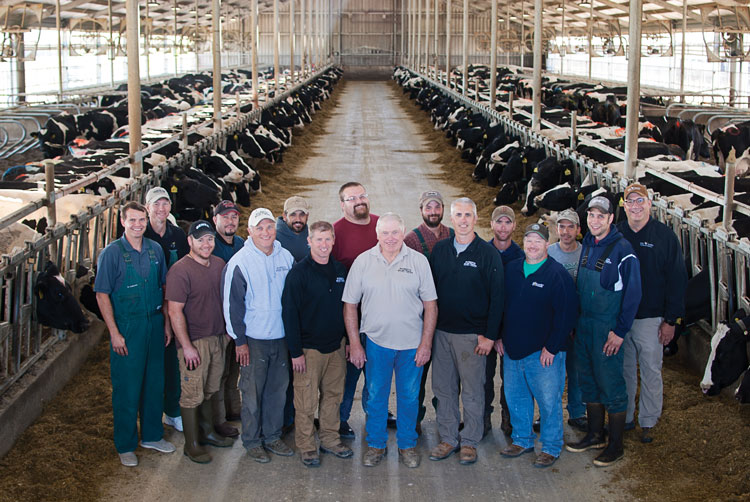
“All heifers are bred four times and flagged as a do not breed (DNB) on our Dairy Comp 305 computer program after their fourth breeding. If open, they are sold,” explained Kurt Wierda, who serves as general manager for Plymouth Dairy in LeMars, Iowa.
“With milk cows, they are scrutinized on feet and legs, udder, transition period, and milk production. Our veterinarian also will let us know about individuals they feel are unlikely to get pregnant by what they see with their ultrasound, and we label those cows as DNB or ‘Do Not Breed,’” said Wierda of the dairy located in northwest Iowa that won Platinum honors in this year’s Dairy Cattle Reproduction Council’s tenth annual awards competition. “The DNBs receive blue clips in their ear tags and are all in one designated pen. We do not use any cleanup bulls with cows or heifers.”
All six of this year’s Platinum winners of the Dairy Cattle Reproduction Council’s awards share additional insight in this Hoard’s Dairyman Intel as well as the Round Table found on pages 695 to 697 of the November issue of Hoard’s Dairyman. This year’s competition drew the second-largest set of nominations to date from 16 U.S. states, Canada, and Italy.
Here are additional responses to the question, “How do you handle problem-breeding cows and heifers?”
Emerald Spring Dairy, Plainview, Minn.: Open cows are enrolled in ovsynch. Cows open at 200 DIM are no longer bred. Other criteria to stop breeding cows are evaluated case by case (chronic lameness, mastitis, udder conformation, production below 60 pounds on heifers, and production below 80 pounds on older cows).
Jer-Z-Boyz Ranch, Pixley, Calif.: Conventional beef semen follows sorted matings for “reproductive failures.” While no natural service bulls are used with milk cows, approximately eight younger Jersey cleanup bulls are in early pregnant heifer pens. After three to four sorted services, typically two to four services of conventional beef semen, heifers are then exposed to the cleanup bull.
Several factors are considered when deciding to no longer breed milk cows: its genetic value (fertility notwithstanding), age, production, and days in milk. Quite frankly, a beef crossbred calf from almost all fertility challenged bovines is better long term for the dairy industry.
Rollin Green, Brooklyn, Wis.: After three services, a cow is considered a problem cow. The cow will then be flagged for vet check to be sure it is cycling normally, and if confirmed open, it will be CIDR-synched. Depending on the cow, usually by the fourth breeding we use beef semen, sometimes sooner.
Since breeding has improved in the last few years, to be blunt, I give up on problem cows sooner. Due to more aggressive heat detection, it isn’t hard to have four to five services in a cow by 170 to 180 DIM. It takes an awfully superior cow to keep breeding until my absolute cutoff of 220 DIM and 80 to 90 pounds per day.
Schilling Farms, Darlington, Wis.: We try to identify problem cows early and stop breeding them. Cows are considered for a DNB classification when they are open, more than 180 DIM, and have lower milk production.
When a DNB cow’s milk production falls to less than 70 pounds, it is considered for culling. Cows may be classified DNB earlier in lactation based on age, production, or feet and leg concerns.
Weisenbeck Dairy, Durand, Wis.: Any cows over 200 DIM and under 80 pounds per day are culled. If a cow is milking at a higher level and depending on lactation number, the cow is made a DNB and kept longer than 200 days.
This Hoard’s Dairyman Intel article is part of a nine-part series detailing top reproduction tips from the Platinum winning herds for the tenth annual Dairy Cattle Reproduction Council awards competition.
Click below to view previous reports from this DCRC series:
They track fresh cow temps for 12 days








